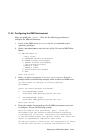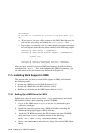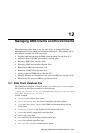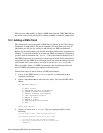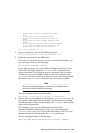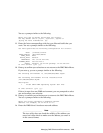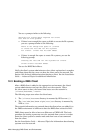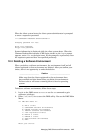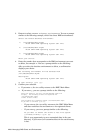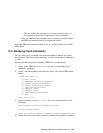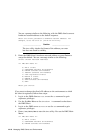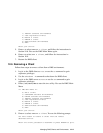
7. Enter the swap device and partition on the DMS client. You see a
prompt similar to the following:
Enter the swap device drive type for dsk0b. [RZ26]:
8. Enter the swap device drive type for your previous entry. You see a
prompt similar to the following:
Enter the network interface for client1
(nn.nn.nnn.nnn) [ln0]:
9. Enter the DMS client’s network hardware address. You see a prompt
similar to the following:
Enter the subnet mask for ln0. [255.255.255.0]:
10. Enter the DMS client’s network subnet mask.
You may see the following prompts:
• If the DMS client is on a different subnet from the DMS server, you
see a prompt similar to the following:
Enter the default route for network nn.nn.nnn
[nn.nn.nnn.nnn]:
___________________ Note ___________________
The default network interface is ln0 for the DEC 3000
series and other systems that use the Lance Ethernet
module. Some systems such as the EB64+ use the Tulip
Ethernet module, which may be identified as tu0.Be
sure to enter the correct network device identifier for the
Ethernet or FDDI interface on the client system.
• If there is an entry for the client’s subnet in the
/var/adm/dms/gateways file on the server, the following message
is displayed:
The following are the known gateway[s] between the client subnet and
server subnet. If these value[s] are not correct, please enter the
proper address[s]. If these value[s] are correct, press Return. (For
example, nn.nn.nnn.???) [nn.nn.nnn.nnn]:
• If there is no entry for the client’s subnet in the
/var/adm/dms/gateways file on the server, you see a prompt
similar to the following:
Enter the IP address of the gateway[s] between the client subnet and
server subnet. (For example, nn.nn.nnn.???) :
See the Network Administration: Connections manual for information
about obtaining the client’s network information.
12–4 Managing DMS Clients and Environments




